Although a friend said it would be cloudy, I decided that it was better to go for pleasure than to stop going and miss it. So we rented a car, not without some work, and left at midnight to Kennedy Space Center, to witness the last launch of the shuttle.
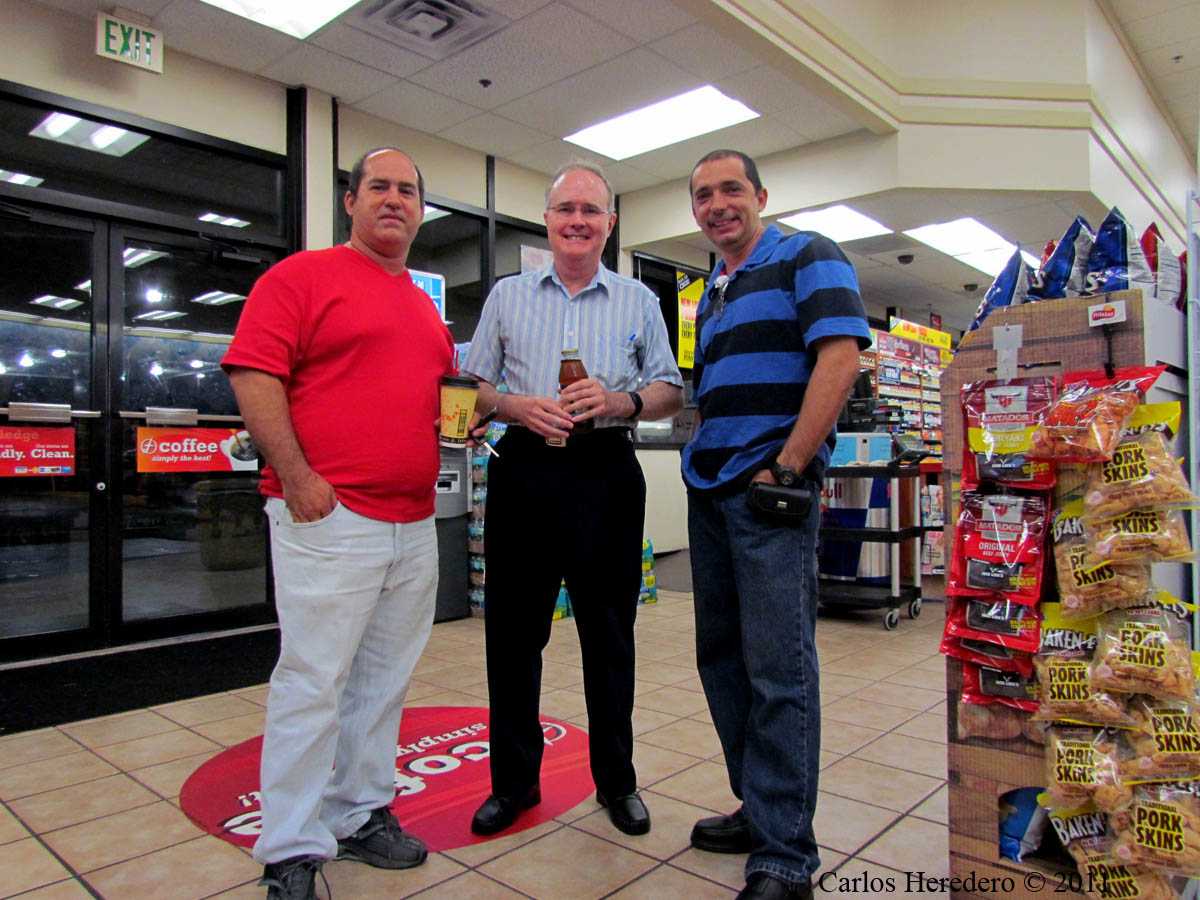
We had more than a week of heavy rain, cloudy skies and even a storm. The weather forecast was a 70 percent chance of rain for that day. Much against, and in favor, perhaps only the desires and anxieties of hundreds of thousands of people who had been traveling for days, some from far away destinations. All united by the idea of saying goodbye to the “space shuttle”, that kind of space bus.
After 30 years of services, the last of its representatives would go to the international space station, with only four crew, or what is called “the skeleton crew”, that is, only the essentials. A privilege reserved for only four men from an overpopulated planet.
Many speculated if the launch would be made or suspended.
We got off Interstate I-95, after more than three hours of travel, at four in the morning, and already at four past ten we had to stop: an incredible double line of six and a half miles long to entering the space center was observed as a pair of long snakes of red lights.
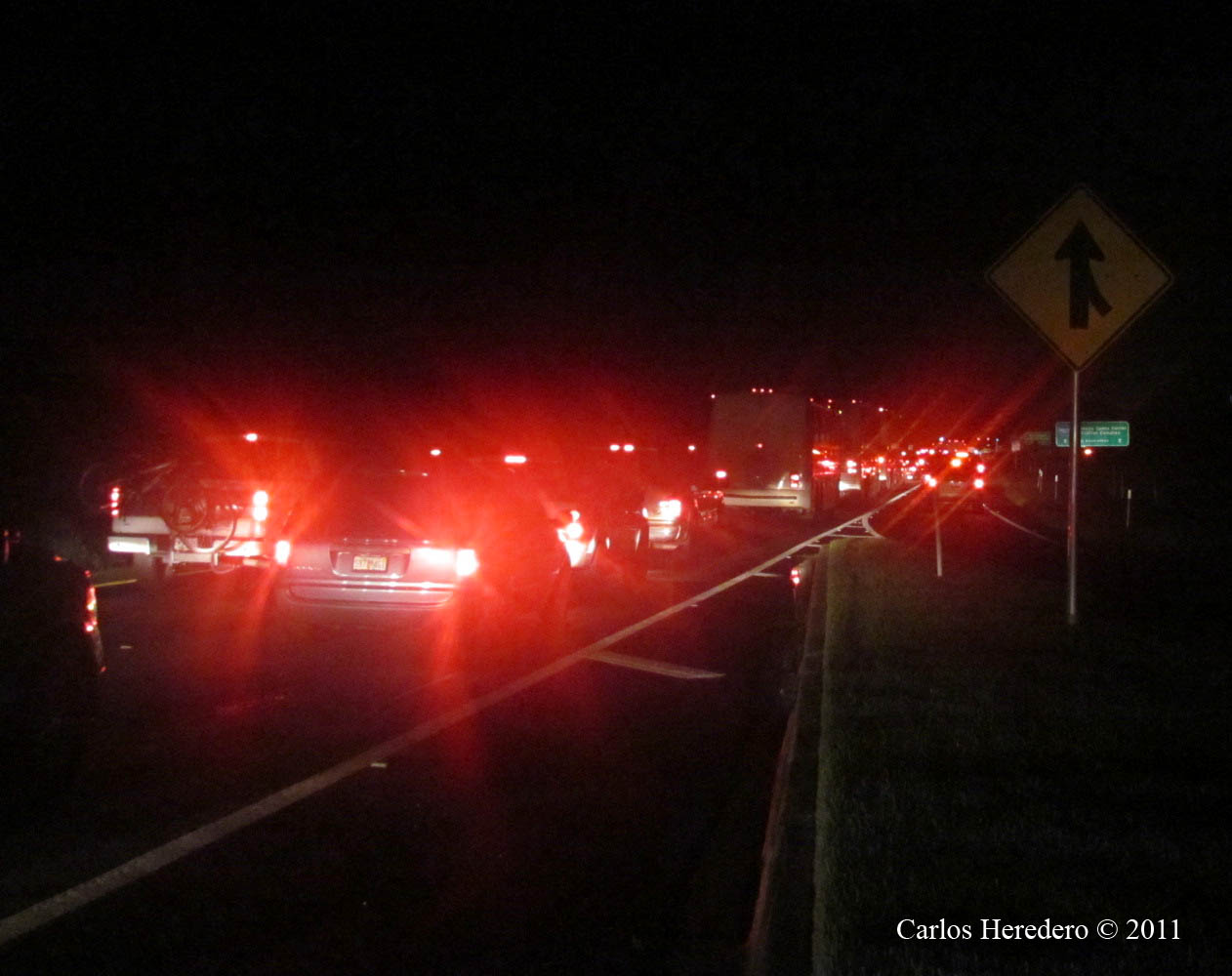
It was advancing in short stretches, and we could see smiling faces, video cameras and photographers in all of them. We looked at each other with curiosity, but we were like old acquaintances, like brothers. The emotion began to be linked as a multiple feeling.
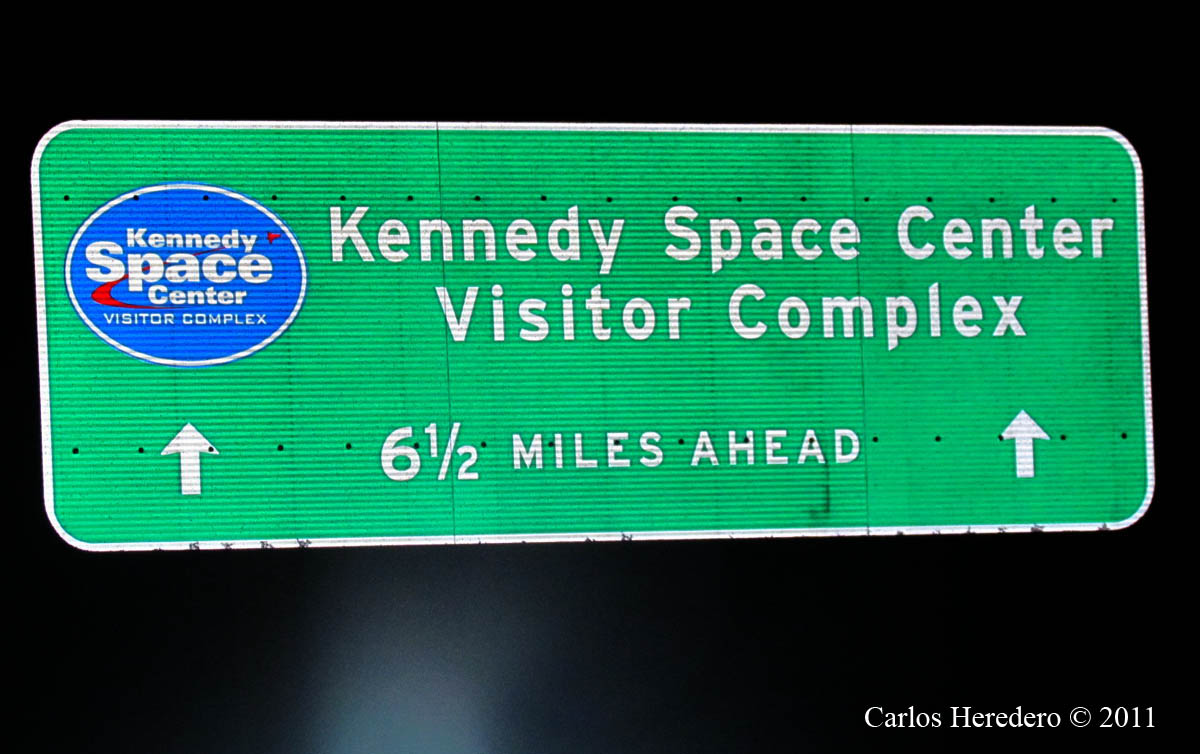
When we realized that it was impossible to enter, and knowing that it was important to act quickly to get a good place, we took an exit to the left of the avenue, where for 40 dollars we could park, under the promise of having the best place to observe the takeoff. We enter.
It was an improvised parking lot in the bush, with bulldozers, and a sandy and slightly muddy terrain. Some, of the dozens of vehicles that entered, got stuck there, including vans. But that did not matter. Many opted, faced with the indiscriminate attack of the mosquitoes, for remaining inside the car, waiting for the dawn. But we could not. It had to be seen at night, with its lights, waiting for the moment of departure. We take some things, and although later we should return for more, we begin to look for a place of good visibility.
Although we never thought to walk through the mountain at dawn, the experience was added to the interesting thing of that moment. A sky that was still cloudy, and we (and all) waiting for it not to rain, but the many people who came incessantly to the place. Finally, we found a clearing that looked perfect, just about six miles from “ground zero” and with a fairly clean field of vision.
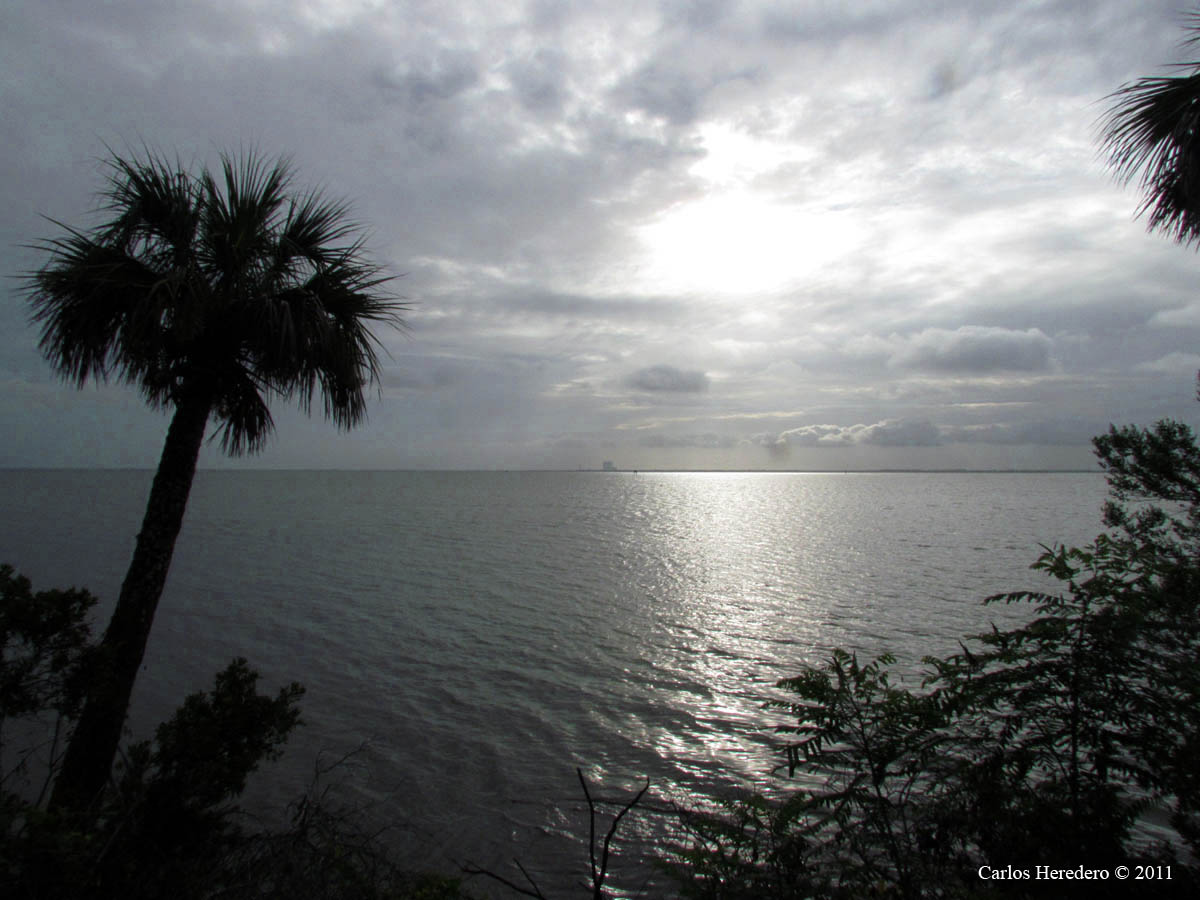
When we looked back, the number of people increased every minute. From the elderly to a crowd of children, people with refrigerators, folding seats, umbrellas and all kinds of cameras. It was a unique event, something that many would want to see before it went down in history.

Of course it was not the same to watch it on television. Although many recommended it to me, and it was more comfortable from a sofa and with a drink in my hands, all those who were there opted for the harder, more distant option, but the one that would give the biggest prize. Being part of almost a million people with the same unique interest, it gave one the feeling of being part of a large family, the one that met to see the last flight of his swan.
In about three trips to the car, at a distance of almost a mile, I managed to put together my pair of tripods, each with a camera. One would record the release, and another would use it to record the reactions of the audience.
A third camera, Canon SX30, would have it in hand to use the zoom at will.
We had to stand up all the time, although we invented an umbrella that our friend Orlando Chirino brought, and I sat down for a couple of short minutes.

The doubt of whether there would be a launch or not, continued in the air. A lady brought a radio and received, at full volume, a follow-up on the state of affairs there, six miles from us. We knew the stress and responsibility behind a launch, and this, in particular, would be even worse. So many people had sacrificed time, money and perhaps even family commitments, to be there, to cancel the exit would be a great disaster.
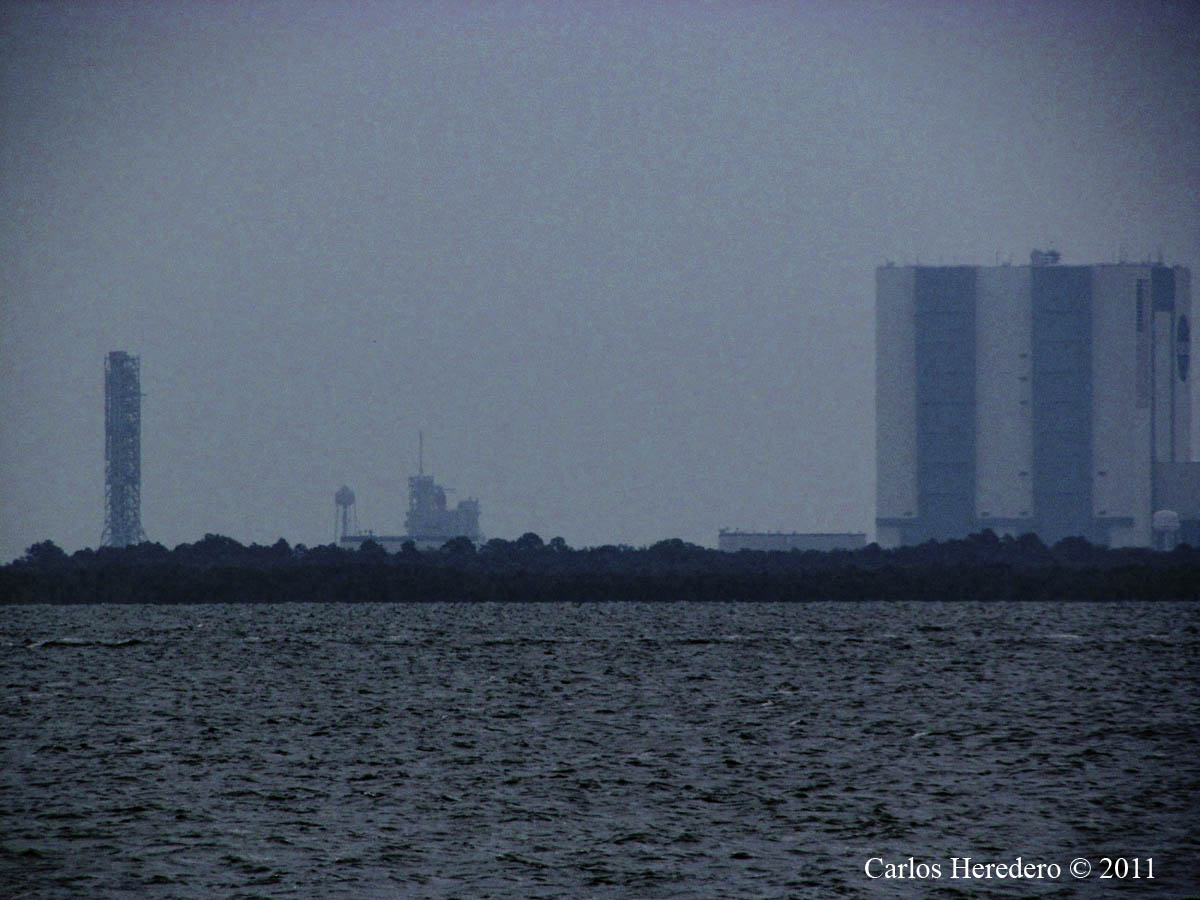
But in the environment felt something floating above the sea, towards the launch pad, and that came from each person. It was the desire to push the ship, to lift it into space, whatever it cost.
You could almost say that with so much human energy, it would have been enough to take your 2000 tons to space, because what you felt there was more than a religious experience, much more, with almost a million people looking towards the same place. It was more than a musical concert by some famous, or a religious talk by some connoisseur of the subject. It was science as a spectacle, as hope, as a guide and an idea of what we can do. It was science uniting thousands of people in a unique and special moment.
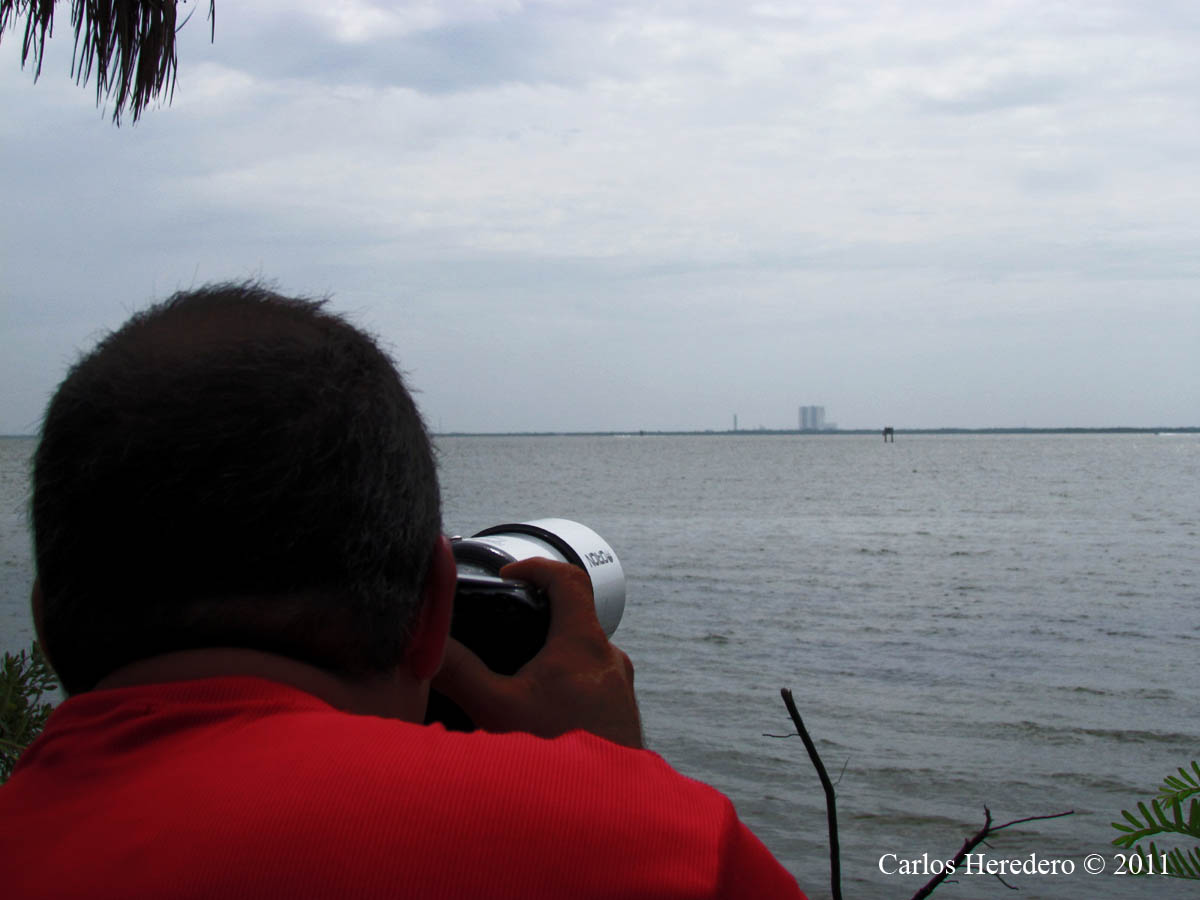
After six hours of standing, enduring the pain of the knees, the crucial time arrived.
Despite
all that human energy gathered there, it was not enough with the
emotion and strength of all those people united by a desire, and in the
counting there were pauses that left everyone breathless, before the
possibility of suspension of the launch. But on those two occasions the account was resumed.
Someone
behind us shouted “20 seconds”, and the hair stood on the back of the
neck when the children soon began to chant “… 6,5,4,3,2 …” and there
the crowd shouted when they saw the white smoke coming out on the side. There was no turning back, the show had begun and, beyond any doubt, the action was rushing every millisecond.
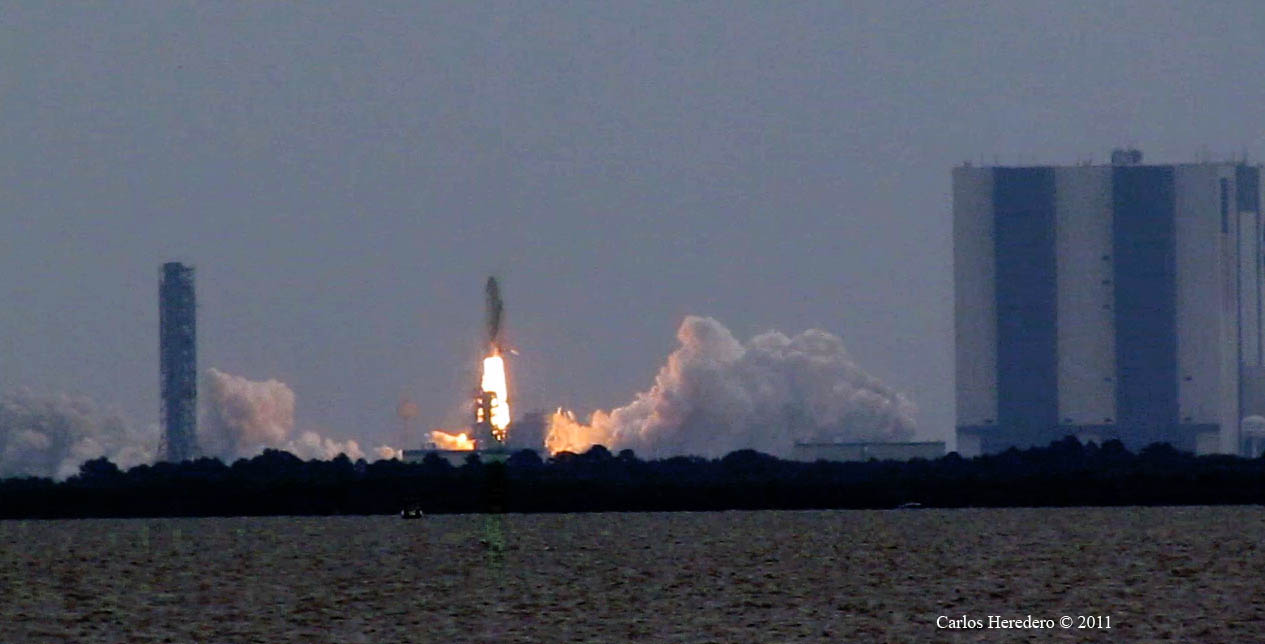
In the middle of the smoke finally arose the intense flame of the solid fuel engines, and began to rise that incredible structure that, despite almost its 2000 tons, would reach the space station.
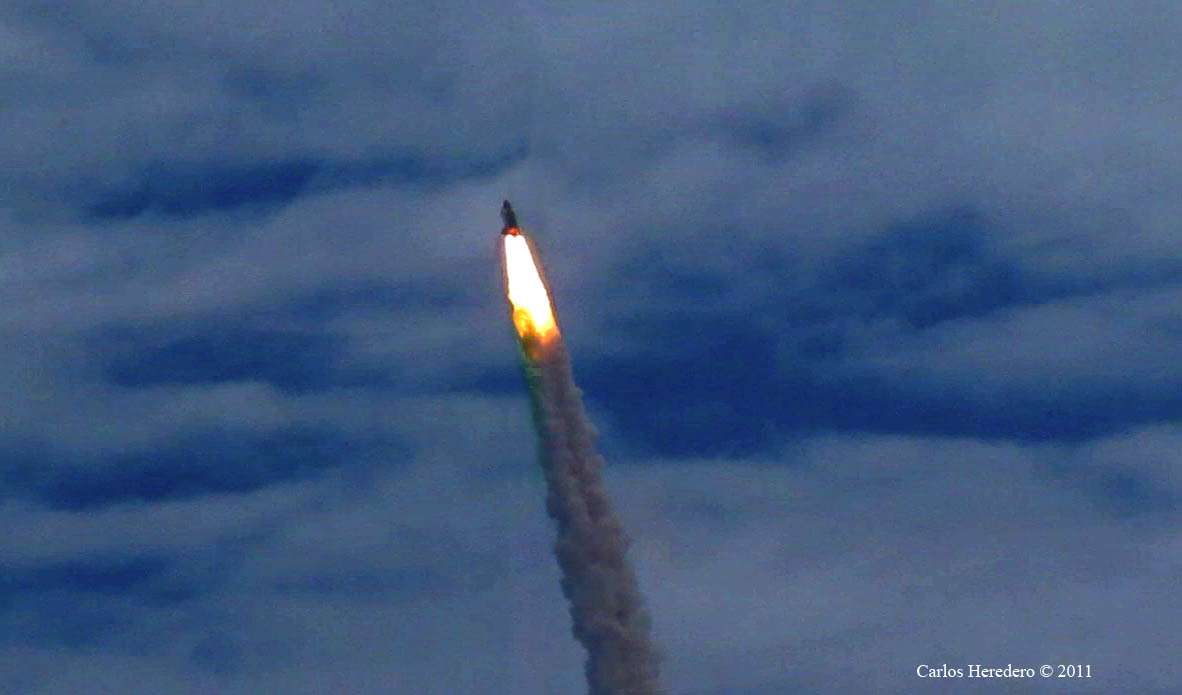
While a child shouted “! … fantastic, fantastic …!” And the others concentrated their eyes on that iridescent coma, which gradually accelerated and approached the border of clouds, until in a kind of explosion of colors, it crossed the layer of clouds and disappeared. The faces of ecstasy filled the place and began to feel the lack of the flying device, like a silence that came from up there.
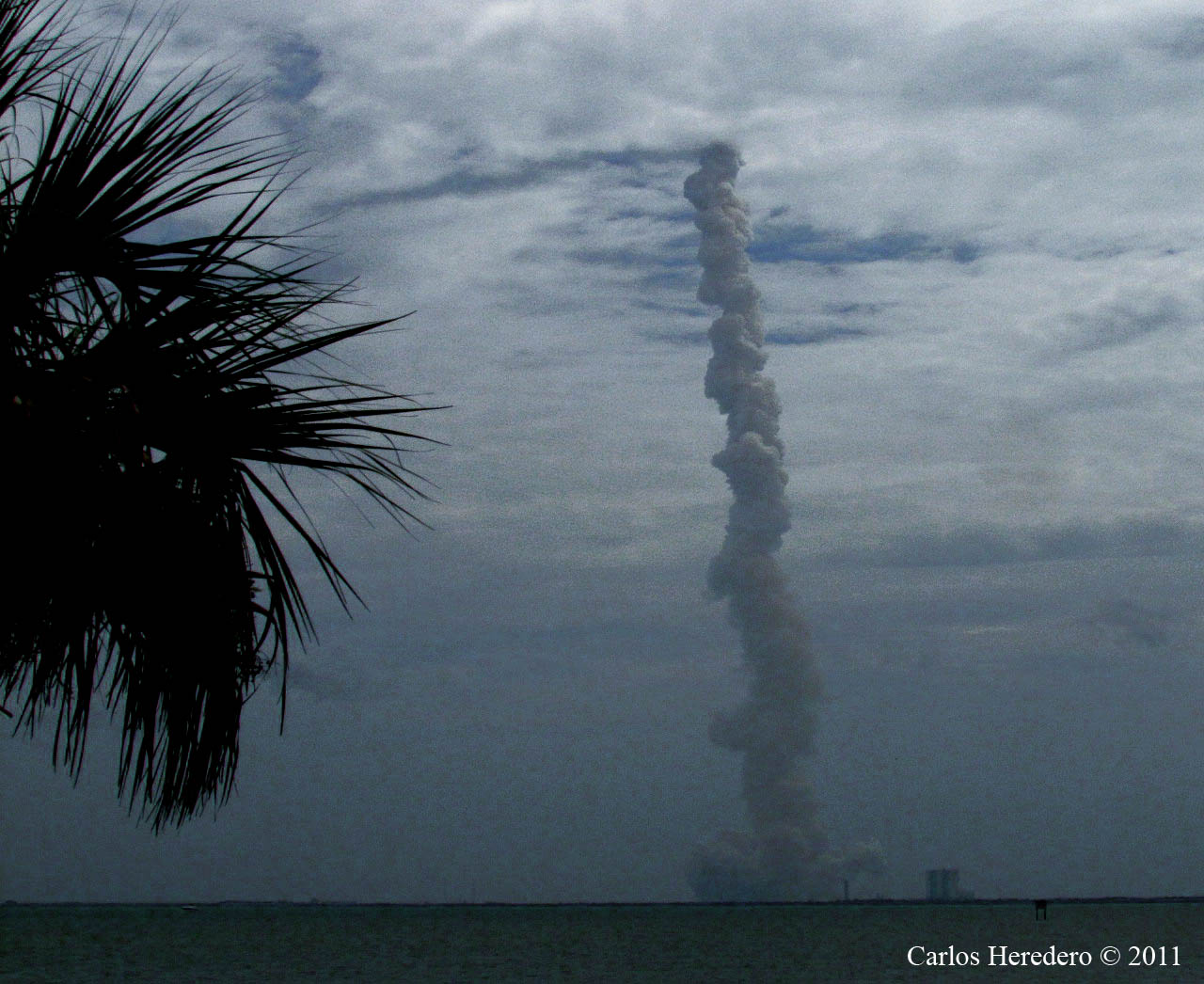
But it was not the end of that. In a few seconds, they all became more silent to listen to the sequence of explosions, that dull noise generated by the engines, and that for a few seconds he left everyone as hypnotized. Until the last noise died.
Finally, the show came to an end. While those four human beings continued with their program of space travel, for the terrestrials it was time to return to their homes.

Then, in the light of day, we finally saw the real magnitude of the show, with those thousands of cars lined up, waiting for their turn to leave.
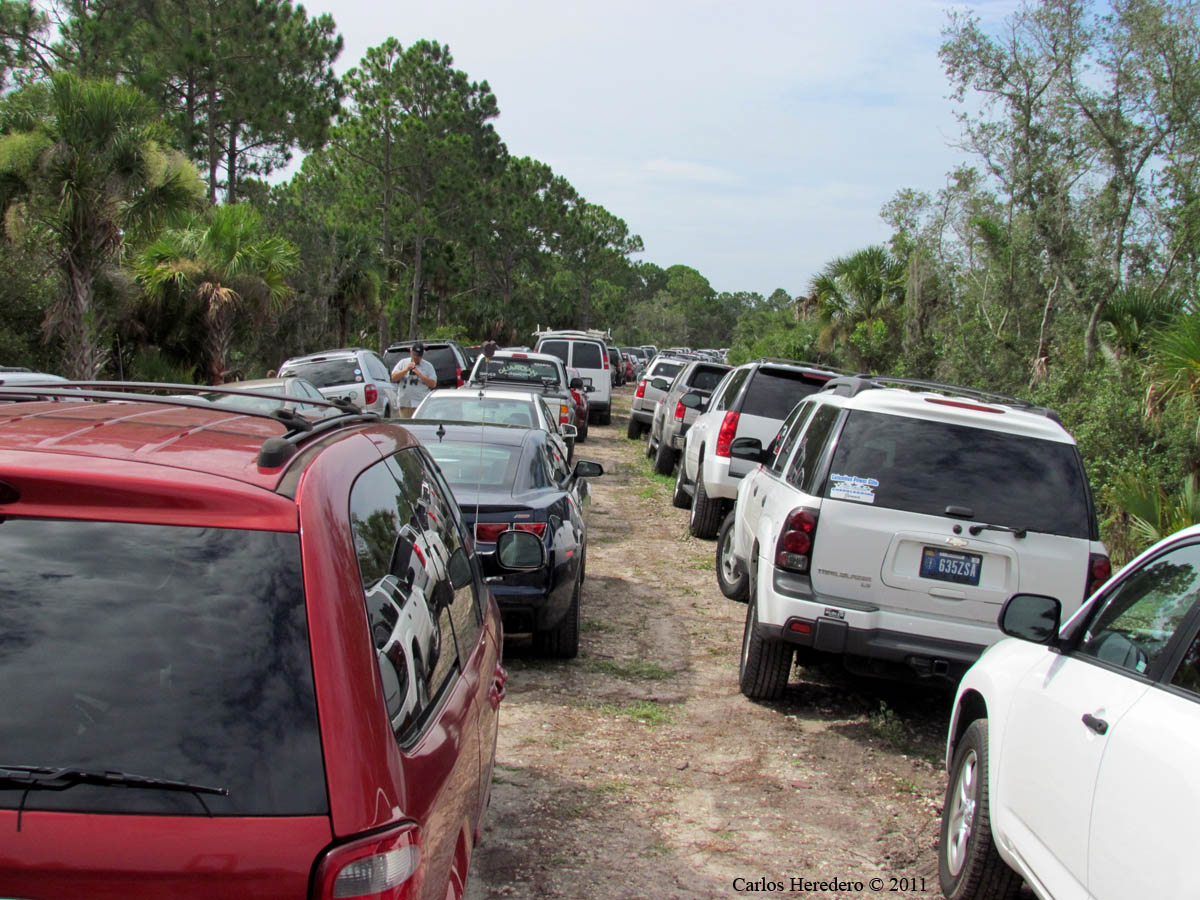
It was almost as exciting as the launch itself, seeing so many people, and so calm and satisfied.

It is said that from within, it took some about six hours to get out of the space center.
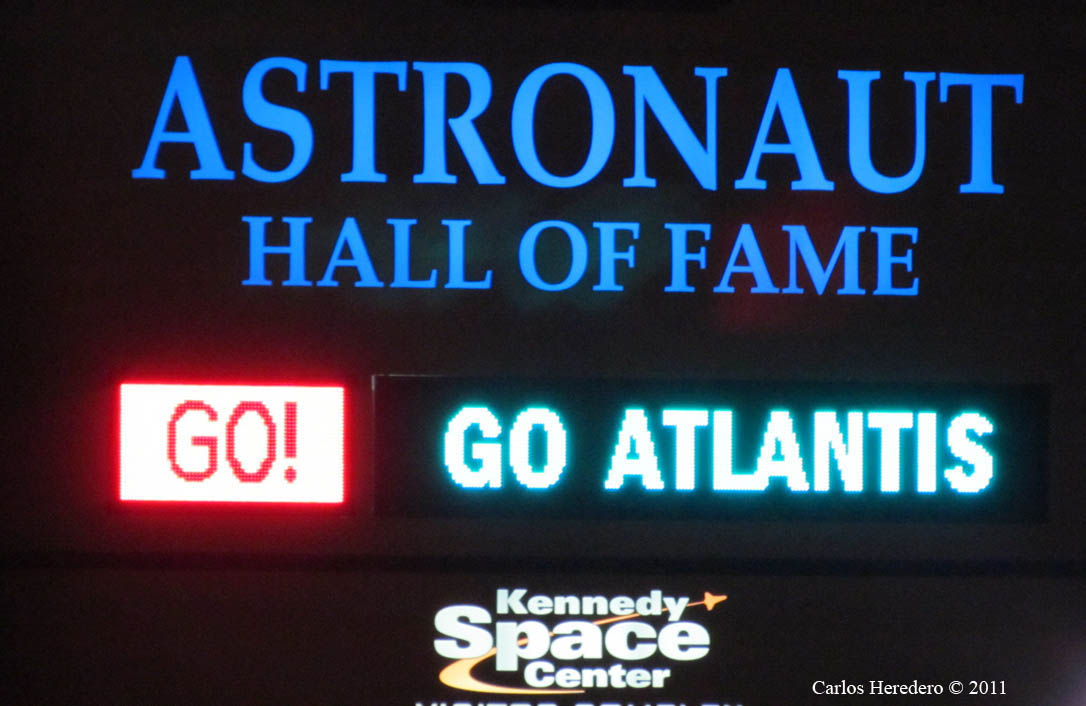
We had hours of travel waiting for us, some days maybe, but all with the unforgettable image of that human creation, a mixture of ingenuity and brute force, but above all of human will, breaking the cloud layer in the middle of a dull sound, towards infinite space. I am sure that all those present there, in their hearts, said goodbye to the swan that would no longer fly.
